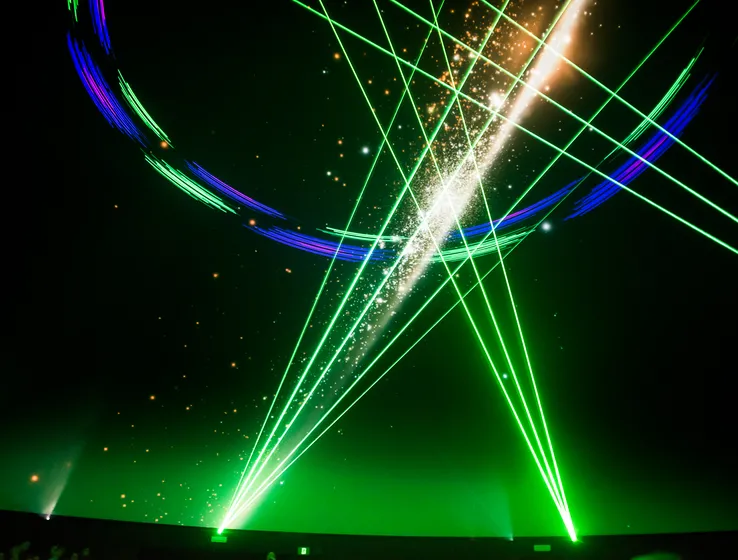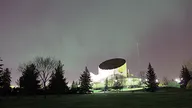The Visible Planets
Mercury becomes visible low along the southeastern horizon prior to sunrise by November 22. After this date it slowly climbs higher in the sky from day to day, appearing highest by the end of
the month. On November 24, look for Mercury very close to the much brighter planet, Venus, above the southeastern horizon before sunrise.
Venus shines brightly above the southeastern horizon before sunrise this month. However, as the month progresses, Venus sinks lower toward the horizon, becoming more difficult to view by the end of the month. On November 18 and 19, look for Venus near the waning crescent Moon in our predawn and dawn sky. A nice pairing of Venus with the much fainter planet, Mercury, takes place before sunrise on November 24.
Mars is not visible this month.
Jupiter can be seen rising above the northeastern horizon around 10:00 pm early in the month and by 7:00 pm at the end of the month. After Jupiter rises, it traverses the southern sky in a high arc during the night, reaching its highest elevation of 57 degrees when it transits in the south. Jupiter can be seen in the constellation of Gemini, the twins, this month, and is found just below the two bright stars, Castor and Pollux. On November 10, Jupiter can be found just below the waning gibbous Moon.
Saturn is seen shining above the southeastern horizon after sunset. It steadily climbs higher into our night sky as the night progresses, appearing highest in the southern sky (about 34 degrees) at about 9:30 pm at the start of the month and by 8:00 pm by the end of the month. Saturn is still located within the constellation of Aquarius, the water bearer, this month. You can see the circlet of Pisces just above Saturn through the month. On the evenings of November 28 and November 29, the waxing gibbous Moon can be seen near Saturn.
Moon Phases
November 5 Full Moon (The Beaver Moon) Largest Full Moon of 2025!
November 11 Last Quarter Moon
November 19 New Moon
November 27 First Quarter Moon
Special Events
International Space Station (ISS) Observable Passes
During the month of November there will be two pre-sunrise passes of the ISS, one on November 1 and the other on November 2. After these early morning passes, the ISS will return to early evening passes from November 13 until the end of the month. Exact times of these passages for your location can be found by visiting the website http://www.heavens-above.com or by using satellite tracking smart phone apps like Sputnik or Spot-the-Station.
November 2 Return to Mountain Standard Time (minus 1 hour of time at 2:00 am)
November 4/5 Double shadow transit on Jupiter tonight (9:30 pm -1:00 am MST)
November 5 South Taurid meteor shower peaks
Largest Full Moon of 2025 (A so-called “Super Moon”)
November 9 Carl Sagan Day!
November 10 Royal Astronomical Society of Canada (RASC) Edmonton Centre meeting
Live in the Zeidler Dome at TWOSE and presented virtually through Zoom.
7:30 pm – 9:30 pm
Free for anyone to attend.
See http://www.edmontonrasc.com for more details.
November 11 Remembrance Day
November 11/12 North Taurid meteor shower peaks
November 17/18 Leonid meteor shower peaks (over evening hours)
Only a zenith hourly rate of twenty meteors per hour.
November 20 Double shadow transit on Jupiter (Io and Callisto’s shadow) from 8:15 - 8:50 pm
November 21 Uranus at opposition





